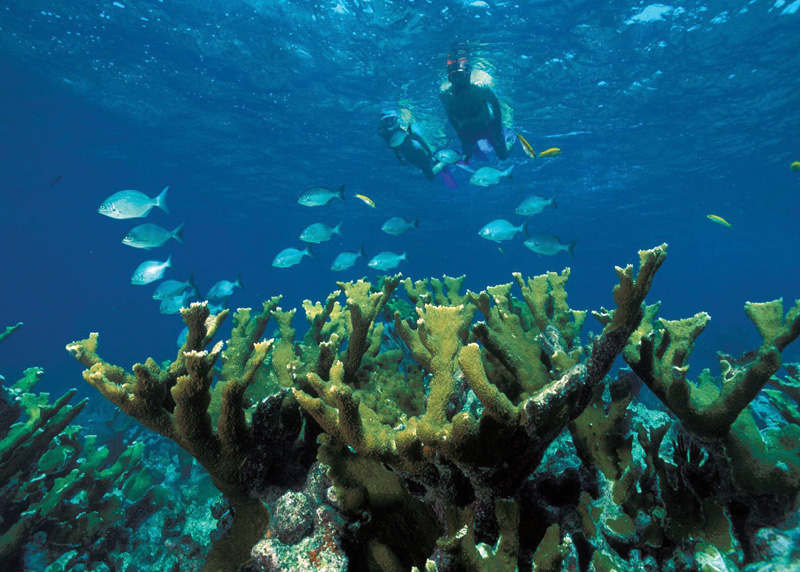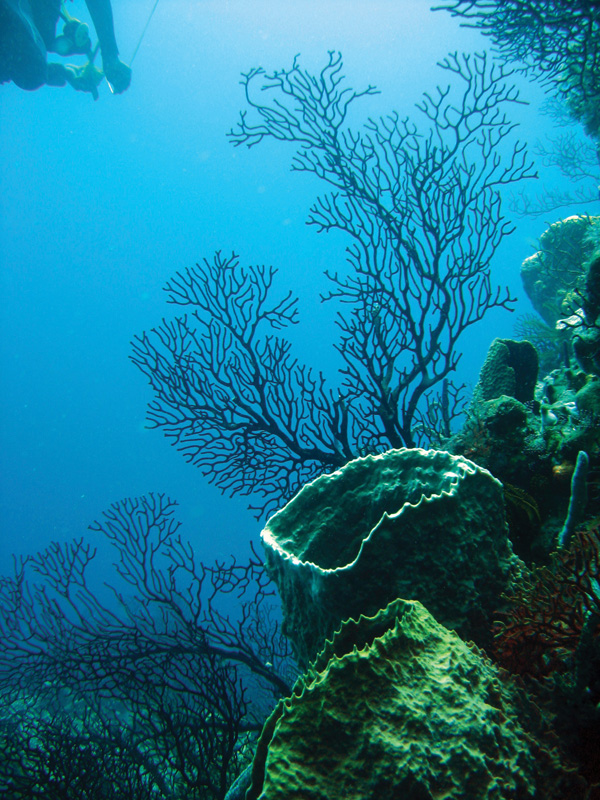Coral reefs of the Caribbean: a delicate ecosystem, both fragile and beautiful
The exotic array of tropical marine wildlife and stunning coral reefs of the Caribbean form a delicate ecosystem that is as fragile as it is beautiful. Coral reefs have been facing adversity in recent years due to the effects of climate change and human impact. As sailors, we are responsible for respecting the reef by practicing techniques that protect and preserve the environment, as well as your boat and safety.

Often misunderstood to be rocks or plants, corals are actually animals. They are Cnidarians, like sea anemones and jellyfish. Coral reefs are an essential component of our marine ecosystems, producing half of the oxygen in the planet’s atmosphere and providing a habitat for about a third of marine fish species, even though they cover only 0.0025 percent of the earth’s surface.
The danger of running aground on reefs might be common knowledge for boaters, but there are other important aspects of sailing that can endanger the reef. Read on for initiatives that you can practice to help sustain coral reefs.
Sunscreen
Take the initiative to utilize mineral-based sunscreens that use active ingredients such as zinc oxide and titanium dioxide which are recognized as safe and effective by the FDA. You can also don long sleeved sun shirts and pants with SPF that can drastically reduce the amount of sunscreen entering the water, while still shielding you from the sun.
Sunscreens that contain active ingredients of axybenzone, avobenzone, homosalate, octinoxate, and octocrylene are not considered reef safe. There are several companies that incorrectly label their products as reef safe while still containing these harmful chemicals. Research proved that the effects of some of these ingredients leaves coral more susceptible to bleaching and DNA damage.
Senior coral scientist at The Reef Institute, David Gross, says, “Just because the bottle says ‘reef safe’ doesn’t mean that it is reef safe. Those chemical sunscreens are not only unsafe for corals, but also they’re not safe for humans. They’re endocrine disruptors.”

Ocean awareness
Sailors typically have a close eye on the weather, but maintaining a keen awareness about the weather conditions is essential when venturing out for a snorkel or dive. It’s important to be aware of shifting tides and unforgiving currents in the area, as even the strongest of swimmers can be swept away by a rip tide. Big swells can mean turbulent seas and limited visibility from churned up sand and debris, which wouldn’t make it an enjoyable snorkeling experience anyway. Strong winds are capable of stirring waves that can make snorkeling difficult and toss you around like a tiny rubber duck.
Any of these conditions can also lead to you being unintentionally dragged into coral. Coming into contact with coral can leave you with stings and abrasions while also harming the coral. Breaking pieces of coral, grasping them, or standing on them can cause severe damage and even death for the corals.
Anchoring and mooring awareness
Navigating the reef is important for your vessel’s well-being, but it is just as important for the integrity of coral. Utilize your navigation, tide, and weather instruments to follow sand channels and use mooring buoys to keep anchors, chain, and line off the seafloor.
Ensuring that your equipment won’t interfere with any coral or seagrass beds is crucial for the longevity of environments that host a variety of species. Even if your anchor is placed in a sandy area, maintain awareness of where your boat might shift and drag your line across sensitive areas. It is also important to be aware when tied to a mooring, as lines and chains can falter and lead you to drifting on to the reef. You can also reach out to resources at the local marina or dive shops who will have experienced and accurate knowledge regarding boating in the area.
Leave only bubbles
Though it can be tempting to bring home souvenirs from your experience in the Caribbean, it is considered good marine etiquette to leave any shells or coral formations untouched, as many shells are home to marine animals such as hermit crabs and sea snails.
Not only could you be removing a potential residence, you could be extracting a whole animal too! The cone snail has especially attractive shells, but be warned, a sting from certain species of cone snail can result in extreme pain and potentially even death. Leave cone shells where they lie to avoid any dangerous encounters.
While you shouldn’t take anything from the reef, do not leave any trace or visible footprint. Plastic bags, fishing lines, and other debris can kill wildlife through ingestion, strangulation, or suffocation. Keep trash onboard, and extend a helping hand by retrieving any pollution you come across on your snorkel or sail, such as fishing gear, balloons, or plastic.
by Chelsea Co
Learn more: Visit NOAA’s Coral Reef Conservation Program’s “Coral Facts” and the Reef Institute.
Reef-safe sunscreens: Blue Lizard, Harken Derm, Head Hunter, Raw Elements, Waxhead
Find more informative and entertaining Charter and Cruising articles.




